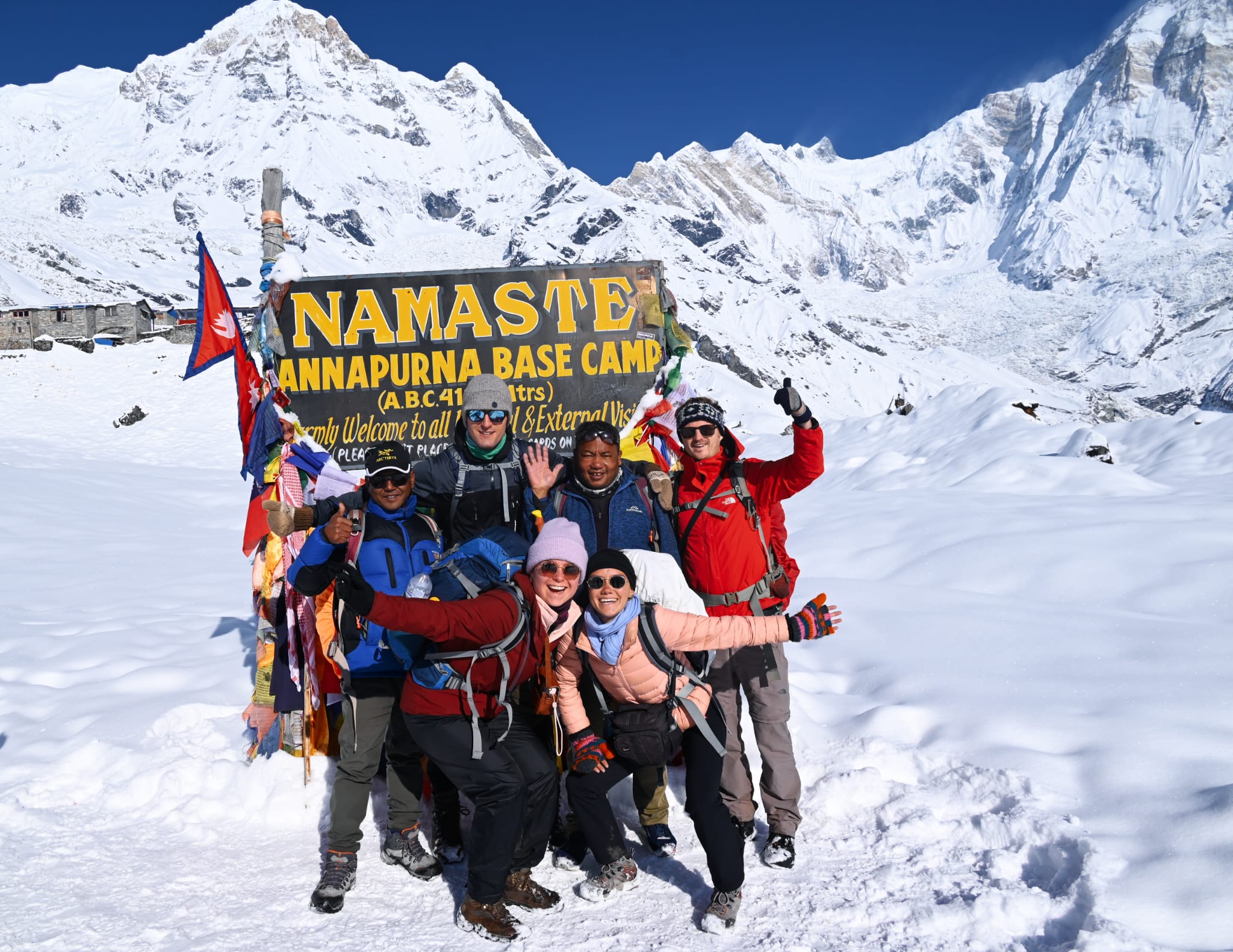Everest Base Camp- 14 Days
Quick Info
- Geography: Himalaya
- Location: Everest Region
- Level of Difficulty: Challenging
- Duration of Trek: 12 Days Trek, 14 Including Kathmandu
- Average Walking Duration: 5-6 hrs per day
- Max Altitude: Kala Patthar (5,545m/18,192 ft.)
- Ethic People: Sherpa, Tamang, Magar
- Accommodation: Tea house/ Lodges
- Transportation: Private or Shared Jeep / Flight
Trek Overview
One of the best trekking destinations in Nepal, the Everest Base Camp Trek (EBC Trek) is a full 14 days of hiking from Kathmandu, Nepal, to the foot of Mount Everest, the tallest mountain in the world at 8,848.86 meters. Everest is the pride and glory of Nepal and by Nepali names, it is, Mt. Sagarmatha. The trek to Everest Base Camp gives you an amazing up-close view of the Giant Mt. Everest from all angles. The Everest Base Camp Hike or Trekcoined it the "Stairway to Heaven" involve easy climbs to steep climbs, making it suitable for trekkers. About 35,000 travelers trek to Everest Base Camp every year and roughly 1,000 climbers ascend to the top of Mount Everest, The highest point on earth. The EBC hike is about 130 kilometers (81 miles) one way (65 km), the specific distance will change depending on the trail you take and any possible detours or side trips along the way.
With every step, the journey to Everest Base Camp reveals a new facet: a rhododendron forest, rivers, sloping hills, glacial valleys, and how Sherpa people have lived their rich traditions. This fourteen-day trek in the Khumbu Valley will highlight the best features of the Khumbu, including the market town of Namche Bazaar, the beautiful monastery at Tengboche, the incredible splendour of the Sagarmatha Nature Reserve's diverse fauna, and the spectacular views of Mt. Everest (8848.86m), Mt. Lhotse (8516m), Mt. Choyu (8188m) and Mt. Ama Dablam.
Best Time for Trekking to EBC
spring lasts from March to May. These are pleasant hiking months because of the milder weather. During this season, the flowers are fully bloomed, and the pathway is lined with petals and leaves. Autumn, which lasts from September to November, is the second-optimal season. These months are characterized by vibrant clouds and a refreshing atmosphere.Additionally, if you visit EBC in October, you could attend the renowned Mani Rimdu festival which is celebrated by Buddhists for 19 days. Normally, we advise avoiding hikes to Everest Basecamp in the summer(monsoon).
How challenging is the Everest Base Camp (EBC) Trek?
The Everest Base Camp Trekking, with an almost 130km trek length, is the most popular and demanding hiking destination, You will be walking 5-6 hours per day. As this is a high-altitude trek i.e. up to 5555m with unpaved roads, normal people can have difficulty in breathing and walking. Every year, many people cannot make it to the base camp because of altitude sickness, which is the reason proper acclimatization is required during the itinerary.
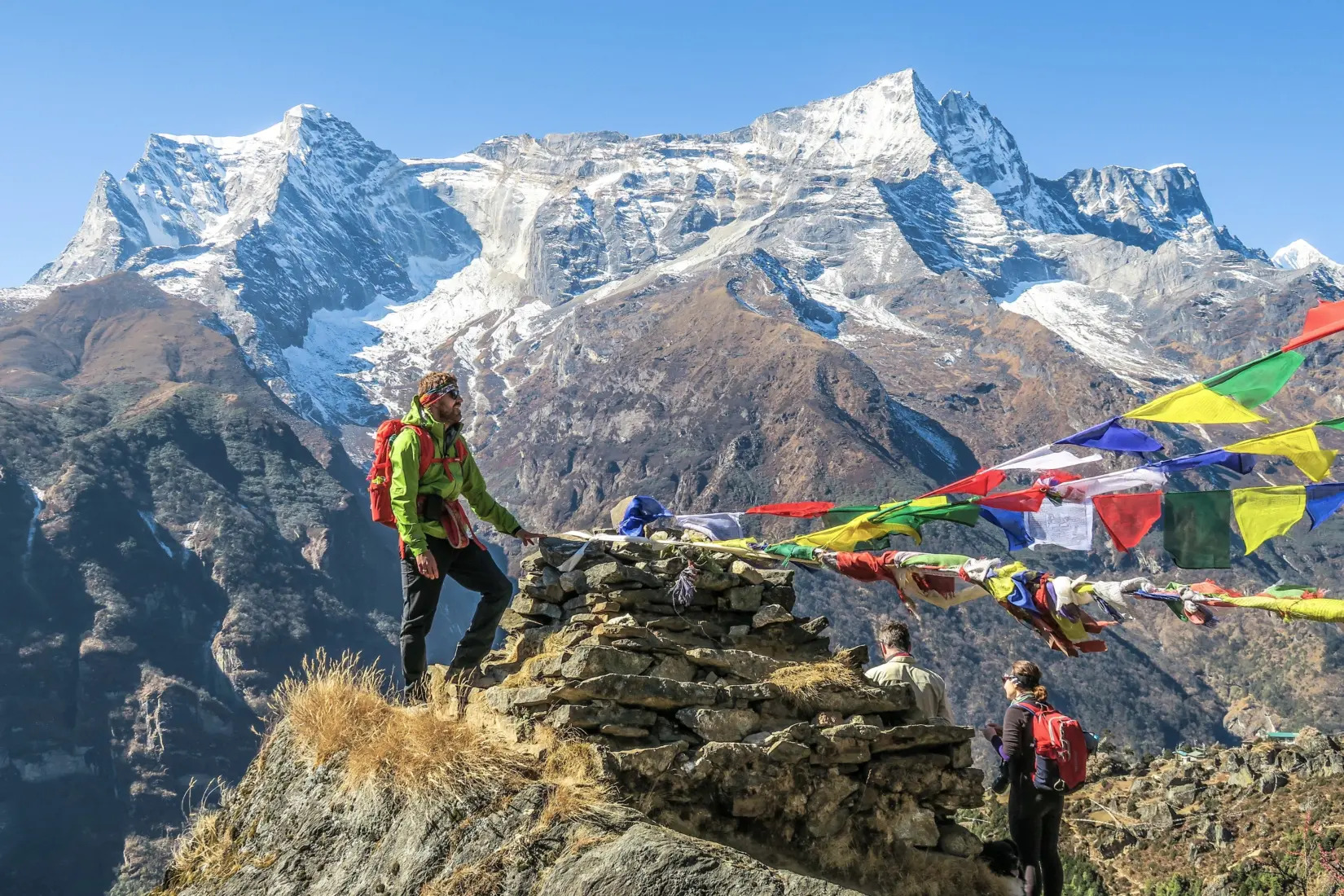
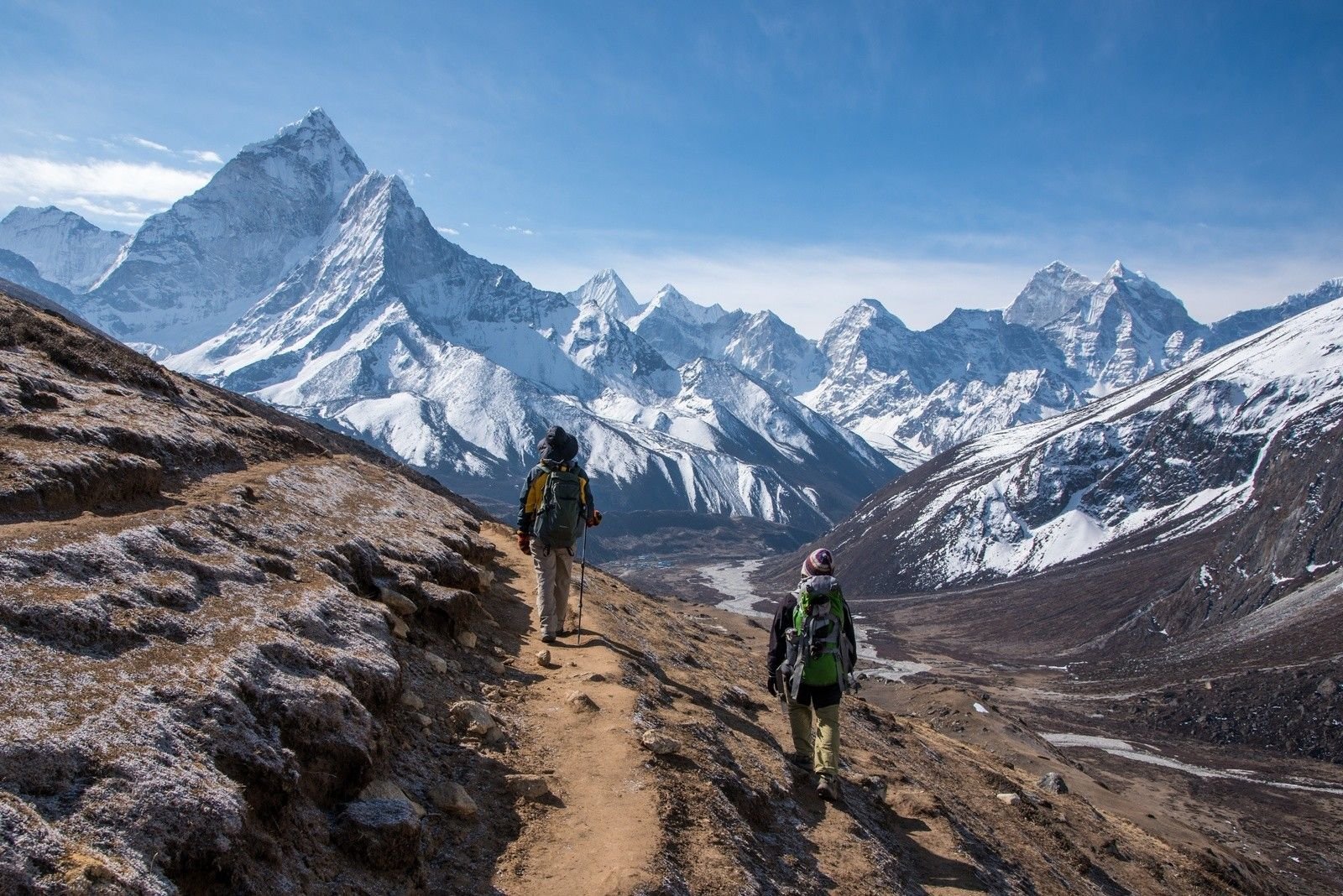
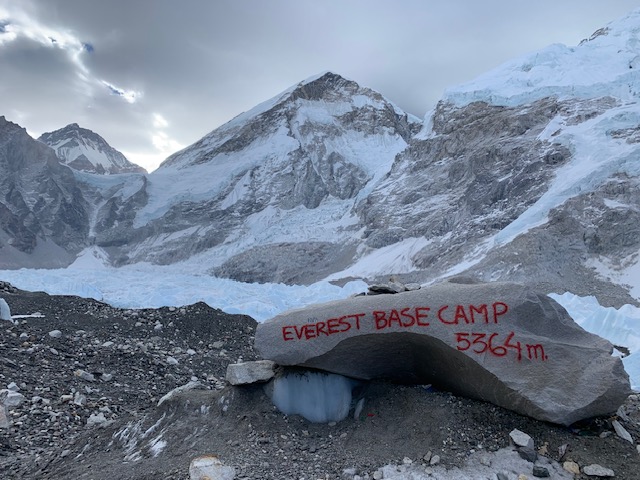
Highlights of Trek- Everest Base Camp, Reach the base camp of the world's highest mountain mt. Everest (8848.86m)
- A scenic flight from Kathmandu to Lukla Airport with a thrilling experience and breathtaking Himalayan vistas.
- Reach the root of the world's highest peak by following the footsteps of notable mountain climbers.
- Enjoy 14 days of getting to know Sherpa's culture and lifestyle.
- Namche Bazaar, the vibrant Sherpa market town.
- Cross high-altitude footbridges covered with vibrant Buddhist praying flags.
- Tengboche Monastery, Situated at an elevation of 3,867 meters, the Tengboche Monastery is a significant spiritual site along the EBC Trek.
- Hike to Kala Patthar's summit to behold mountains including 8848.86m Mt. Everest, 8,516m Mt. Lhotse, 8,188m Mt. Choyu and 6,812m Mt. Ama Dablam that are practically touching.
- Sagarmatha National Park, The trek passes through the Sagarmatha National Park, a UNESCO World Heritage Site.
- Incredible views of Khumbu Glacier, Gokyo Lakes, and mountain ranges.
Detailed Itinerary
Detailed Itinerary for Everest Base Camp Trek – 12 Days
Day 1: Kathmandu – Lukla – Phakding
After arriving in Kathmandu, take a scenic flight to Lukla, the gateway to the Everest region. From Lukla, trek approximately 4 hours (8 km) to Phakding (2,650 m). Enjoy the peaceful surroundings and explore local monasteries or relax by the Dudh Koshi River. Overnight in a teahouse.
Day 2: Phakding – Namche Bazaar
Begin trekking through lush forests and cross suspension bridges over the Dudh Koshi River. Enter Sagarmatha National Park and enjoy your first views of towering peaks like Thamserku (6,608 m). Continue to Namche Bazaar (3,440 m), the vibrant Sherpa market town. Trekking distance: 14 km, 5-6 hours.
Day 3: Acclimatization Day at Namche Bazaar
Rest and acclimatize at Namche. Optional short hikes include visiting Syangboche Airport viewpoint or the Sherpa Culture Museum. Explore nearby villages such as Khumjung and Khumde. Overnight at the same lodge.
Day 4: Namche Bazaar – Tengboche
Trek 12 km (5-6 hours) through rhododendron forests, passing the stupa dedicated to Tenzing Norgay. Reach Tengboche (3,870 m), home to the famous Tengboche Monastery. Enjoy panoramic views of Everest, Ama Dablam, and other peaks.
Day 5: Tengboche – Dingboche
Descend and cross the Imja Khola River, passing mani stones and Buddhist prayer sites. Arrive at Dingboche (4,410 m), a farming village surrounded by towering peaks like Lhotse and Ama Dablam. Trek distance: 10-11 km, 5-6 hours.
Day 6: Acclimatization Day at Dingboche
Rest day to acclimatize. Optional hikes to Nagarjun Hill or Chukhung Village offer stunning views of Lhotse, Makalu, and Ama Dablam. Enjoy the serene mountain environment.
Day 7: Dingboche – Lobuche
Trek approximately 7-8 km (4-5 hours) through small settlements and memorials dedicated to fallen climbers. Pass peaks such as Ama Dablam and Nuptse before reaching Lobuche (4,910 m).
Day 8: Lobuche – Gorak Shep – Everest Base Camp – Gorak Shep
Trek 12 km (7-8 hours) to Gorak Shep (5,140 m), then continue to Everest Base Camp (5,364 m). Explore the base camp area with views of the Khumbu Icefall, Lhotse, and Nuptse. Return to Gorak Shep for overnight.
Day 9: Gorak Shep – Kala Patthar – Pheriche
Early morning hike to Kala Patthar (5,545 m) for spectacular sunrise views of Everest and surrounding peaks. Descend to Pheriche (4,371 m) for overnight. Trek distance: 18 km, 7-8 hours.
Day 10: Pheriche – Namche Bazaar
Descend 19 km (6-7 hours) back to Namche Bazaar, enjoying changing landscapes and views.
Day 11: Namche Bazaar – Lukla
Trek 18 km (7 hours) descending to Lukla, preparing for your flight back to Kathmandu.
Day 12: Lukla – Kathmandu
Fly from Lukla to Kathmandu, concluding the trek.
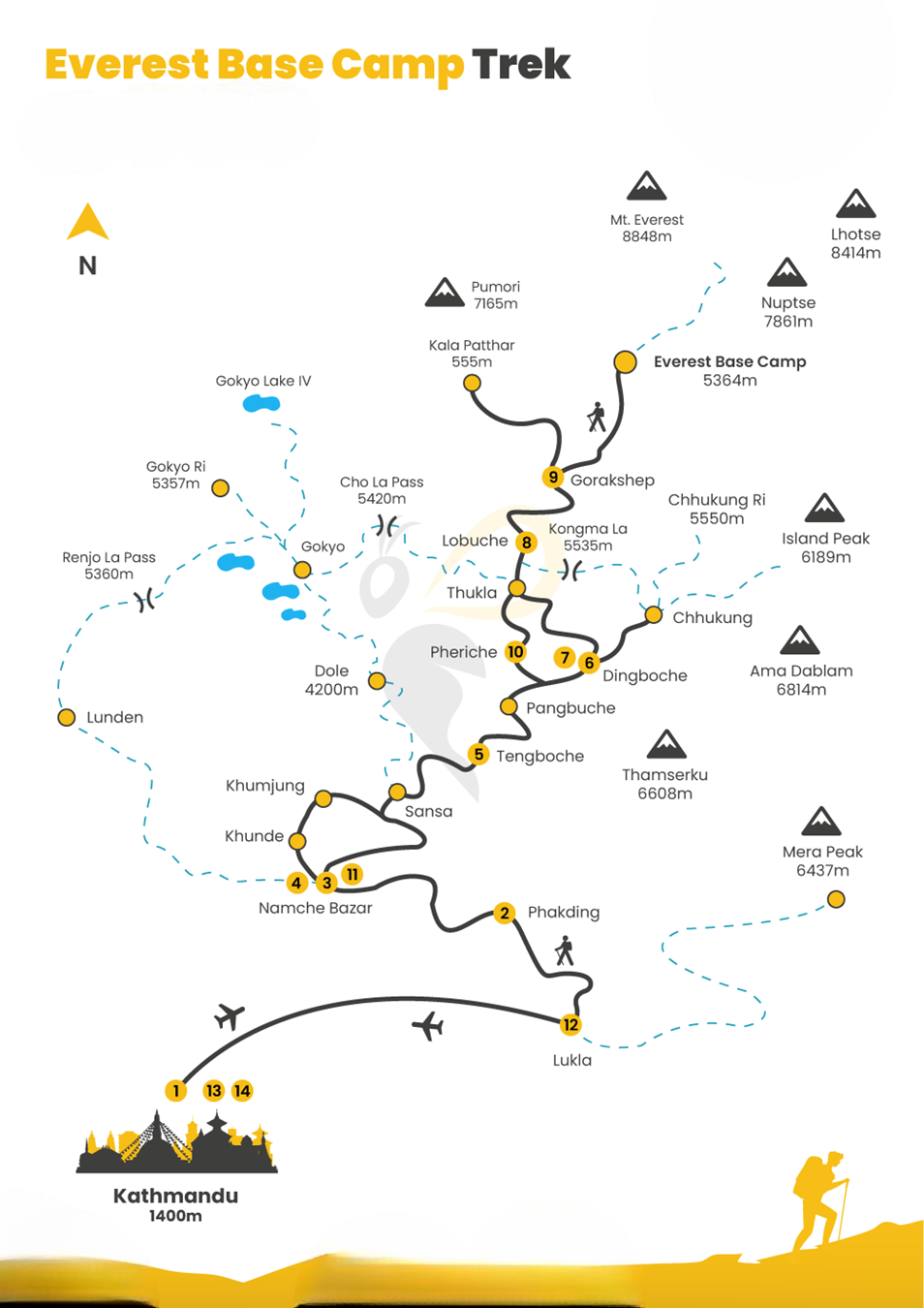
12 Day EBC Trek Altitude Gain and Walk Distance Per Day
| DAY | FROM | TO | Distance (km) | Duration (hours) | Altitude Gain | Sleeping Altitude |
| 1 | Kathmandu - Lukla | Phakding | 8 | 3-4 | -150 m | 2650 m |
| 2 | Phakding | Namche bazaar | 10 | 6-7 | 790 m | 3440 m |
| 3 | Namche Bazaar | Acclimatization Day | 6 | 3-4 | 440 m | 3440 m |
| 4 | Namche Bazaar | Tengboche | 12 | 6-7 | 430 m | 3870 m |
| 5 | Tengboche | Dingboche | 10 | 5-6 | 540 m | 4410 m |
| 6 | Dingboche | Acclimatization Day | 5-6 | 3-4 | 340 m | 4410 m |
| 7 | Dingboche | Lobuche | 9 | 5-6 | 500 m | 4901 m |
| 8 | Lobuche - Gorakshep | EBC(5,364 m) - Gorakshep | 12 | 7-8 | 454 m | 5140 m |
| 9 | Gorakshep | Kalapatthar(5,545 m)- Pheriche | 18 | 7-8 | 405m/769m | 4371 m |
| 10 | Pheriche | Namche Bazaar | 19 | 6-7 | 931 m | 3440 m |
| 11 | Namche Bazaar | Lukla | 18 | 7 | 600 m | 2840 m |
| 12 | Lukla(Flight) | Kathmandu | - | - | - | - |
Essential Items
- A good quality down jacket
- Sleeping Bag (zero or minus rated)
- Sleeping bag liner
- Daypack (above 40 liters)
Upper Body
- Cap or sun hat
- Wollen hat/Beanie
- Scarf/Neck Gaiter/Buff (for dust and cold protection)
- Polarised Sunglasses
Torso
- 2-3 long-sleeve shirts (moisture-wicking shirts)
- 2-3 short-sleeve shirts (moisture-wicking shirts)
- Fleece jacket or pullover
- Waterproof and windproof jacket (Gore-Tex or similar)
Lower Body
- 2-3 pairs of thermal leggings
- 2 pairs of quick-dry trekking pants
- 1 pair of waterproof pants
- 1 pair of Hiking Shorts
- Comfortable pants for tea house
Undergarments
- 5-7 pairs of moisture-wicking underwear
- Sports bra (for women)
- 3-4 pairs of thermal trekking socks (wool or technical fabric)
- 3-4 pairs of regular trekking socks
Footwear
- Waterproof and well-fitted trekking boots
- Lightweight shoes or sandals for camp
- Crampons for light snow season
- Gaiters (for prevention against dust and snow entering inside your boots)
- Casual shoes (for the city)
Hands
- Inner thermal gloves
- Outer waterproof gloves (for insulation)
Personal Care
- Toothbrush, toothpaste, biodegradable soap, etc.
- First Aid Kit (Personal medication, band-aids, blister care, painkillers, etc.)
- Sunscreen and Lip Balm (SPF 50 or higher)
- Moisturizer
- Insect repellent cream
- Quick dry towel
Permits Required for Everest Base Camp Trekking
If you are heading on an unforgettable journey to the Everest Base Camp trek, certain permits are required by the Government of Nepal. These permit entrance fees serve as an investment in preserving the awe-inspiring beauty of the Himalayan range, particularly the cherished Sagarmatha National Park.
1. Sagarmatha National Park Permit:
Sagarmatha National Park is a UNESCO World Heritage Site and a protected area through which the Everest Base Camp trek passes. To enter the park, you will need to obtain a Sagarmatha National Park Permit. You can get this permit in Kathmandu or Monjo, the entrance gate to the national park.
Sagarmatha National Park Entry Permit costs (NPR 3000 per person)
2. Khumbu Pasang Lhamu Rural Municipality Entry Permit:
The Khumbu Pasang Lhamu Rural Municipality is the local government body responsible for the Everest region. As part of the Everest Base Camp trek, you will need to obtain an entry permit from this municipality. This permit is usually available in Lukla, the starting point of the trek.
Khumbu Pasang Lhamu Rural Municipality Entrance Permit costs (NPR 2000 per person)
3. TIMS Card (Trekkers Information Management System Card)
A TIMS Card is an important document required for trekking in Nepal. It is designed to ensure the safety and security of trekkers and to manage trekking-related information effectively.
TIMS Card costs (NPR 2000 per person)
The Climate On The Everest Base Camp
The weather patterns in Everest Base Camp can be unpredictable, even during the best times of the year. It's essential to be prepared for sudden changes in weather conditions.
During the monsoon season, you can expect heavy rainfall, high humidity, and cloudy skies. The temperatures can range from 20-25°C during the day to 10-15°C at night. The monsoon season can make trekking difficult due to the wet and slippery trails, but the landscape is lush and green.
The post-monsoon season, from September to November, is the best time to trek to Everest Base Camp. During this time, the weather is clear and dry, and the temperatures are mild, ranging from 12-20°C during the day to -5-5°C at night.
From December to February, the winter season in Everest Base Camp brings snow and colder temperatures. The temperatures can range from -10 to-15°C during the day to -20 to-25°C at night. Trekking during the winter season can be challenging due to the snow and ice, but the landscape is beautiful, and the trails are less crowded.
The pre-monsoon season, from March to May, is another great time to trek to Everest Base Camp. During this time, the weather is warm and dry, and the temperatures range from 15-20°C during the day to 5-10°C at night. The landscape is also beautiful, with flowers blooming, and the trails are less crowded.
Accommodation at EBC Trek
The Everest Base Camp (EBC) trek offers a range of accommodation options, from basic teahouses to more luxurious lodges.
Teahouses are the most common form of accommodation on the EBC trek. These are basic lodges that offer a bed, a shared bathroom, and sometimes a communal dining area. They are typically inexpensive and provide a rustic, authentic experience. Teahouses can get crowded during peak season, so it's recommended to book in advance.
For those seeking more comfort, several lodges offer private rooms with en-suite bathrooms, hot showers, and WiFi. These lodges are more expensive than teahouses but provide a higher level of comfort and convenience.
It's important to note that accommodation options can be limited in some of the more remote areas of the EBC trek, so it's best to plan your itinerary carefully and book in advance where possible. Additionally, it's important to be flexible and prepared for the possibility of shared accommodation and basic facilities in some areas.
How much does the Everest Base Camp Trek Cost?
The cost for the EBC trek typically ranges from $1100 to $3500 depending upon the company chosen and the service taken.
WiFi Connectivity During The Everest Base Camp Trekking
Availability and Coverage
WiFi connectivity has gradually improved at Everest Base Camp in recent years. Various lodges and camps now offer WiFi access to climbers and visitors, allowing them to stay connected. However, it's important to note that the availability and coverage of WiFi can vary among different establishments.
Internet Speed and Reliability
Due to the remote location, the internet speed at Everest Base Camp may not match the standards of urban areas. Bandwidth limitations and high demand during peak climbing seasons can result in slower connections. Nevertheless, WiFi remains a valuable resource for climbers to communicate and share their experiences with the world.
Mobile Network Coverage at Everest Base Camp Trek
Several major mobile network providers, such as NTC and Ncell, offer coverage at Everest Base Camp. These providers have made efforts to extend their network reach to cater to the communication needs of climbers. However, the coverage can still be limited and depends on the network towers' proximity.
Power Sources Available on the EBC Trek
While electricity may be scarce on the EBC Trek, there are still several options to charge your devices:
Tea Houses/Lodges
Tea houses and lodges along the trekking route often have charging facilities for their guests. However, it's important to note that these facilities might come at an additional cost and may not be available in all locations. It is advisable to carry your charging equipment to be self-sufficient.
Charging Stations
Certain checkpoints and villages have established charging stations where trekkers can charge their devices for a fee. These stations are usually equipped with multiple charging ports, allowing multiple devices to be charged simultaneously. However, these charging stations are not available at every stop, so planning ahead is essential.
Solar Power
Solar power is a sustainable and reliable source of electricity on the EBC Trek. Some tea houses and lodges have installed solar panels to generate electricity for their guests. It's a good idea to stay in such accommodations as they provide a more eco-friendly charging option.
Portable Chargers
Carrying portable chargers or power banks is a practical solution to ensure a continuous power supply. Although you have electricity in the EBC tea houses, it's always a good thing to carry one by yourself so that you can get your device powered up whenever needed.
How to Prepare for EBC Trek
Preparing for a trek to Everest Base Camp requires good physical fitness and a clear mindset, A well-rounded training program may help to ensure safety, enjoyment, and success. You need to be prepared physically, mentally, and logistically at least two months before the journey.
The trek reaches an altitude of 5,364 meters (17,598 feet), where the air is thinner, and the risk of altitude sickness is high. Symptoms include headaches, nausea, and dizziness. The trek involves daily hikes ranging from 5 to 8 hours over rugged terrain. Therefore, building strength, endurance, and cardiovascular fitness is crucial. If you are a fit person who goes jogging, swimming, and gym then it won't be much of a problem for you.
Physical Preparation
Cardiovascular Training:
- Running and Hiking: You can start with shorter distances, gradually increase your mileage with short hikes, and include varied terrain to simulate the trek conditions.
- Interval Training: Combine high-intensity efforts with recovery phases to improve aerobic capacity.
- Stair Climbing: Use stairs or a stair machine to build leg strength and endurance.
Strength Training:
- Lower Body: Focus on squats, lunges, and deadlifts.
- Core: Incorporate planks, Russian twists, and leg raises.
- Upper Body: Perform push-ups, pull-ups, and rows to build overall strength for carrying a backpack.
Flexibility and Balance:
- Yoga: Yoga is highly recommended for trekkers as regular yoga sessions will improve flexibility, balance, and mental focus.
- Stretching: Daily stretching routines targeting major muscle groups to enhance mobility and prevent injuries.
Mental Preparation
- Mindset and Motivation: Maintaining a positive attitude is key for a successful EBC Trekking, visualize success, and stay motivated by setting small, achievable goals.
- Coping with Discomfort: Everest trekking can be highly unpredictable and things may not go as expected so you need to be prepared mentally for physical discomfort and changing weather conditions. You can do your research and have an idea about what to expect during the hike.
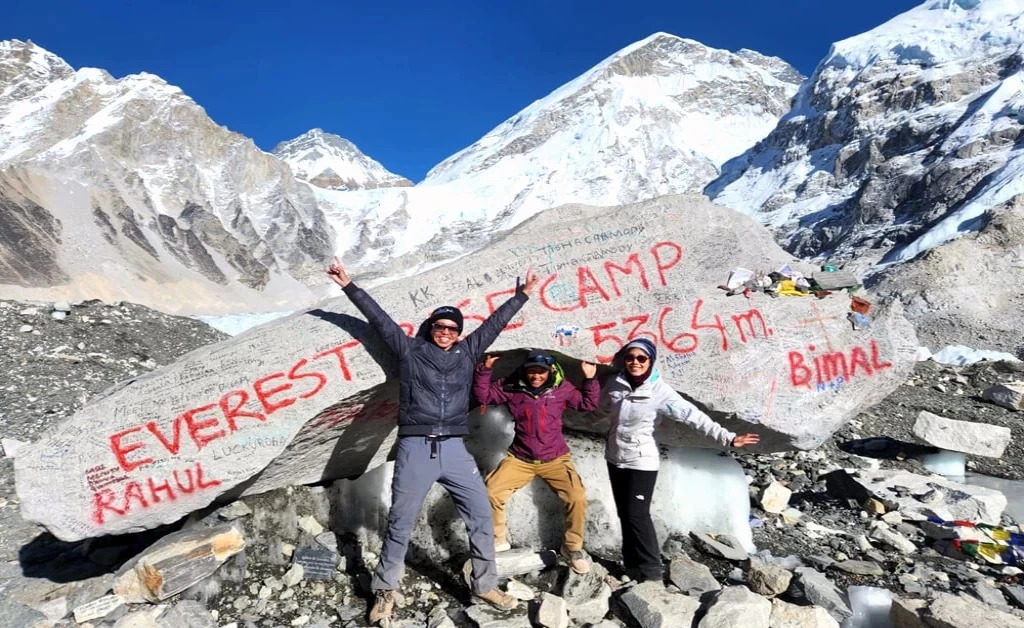
.jpg)
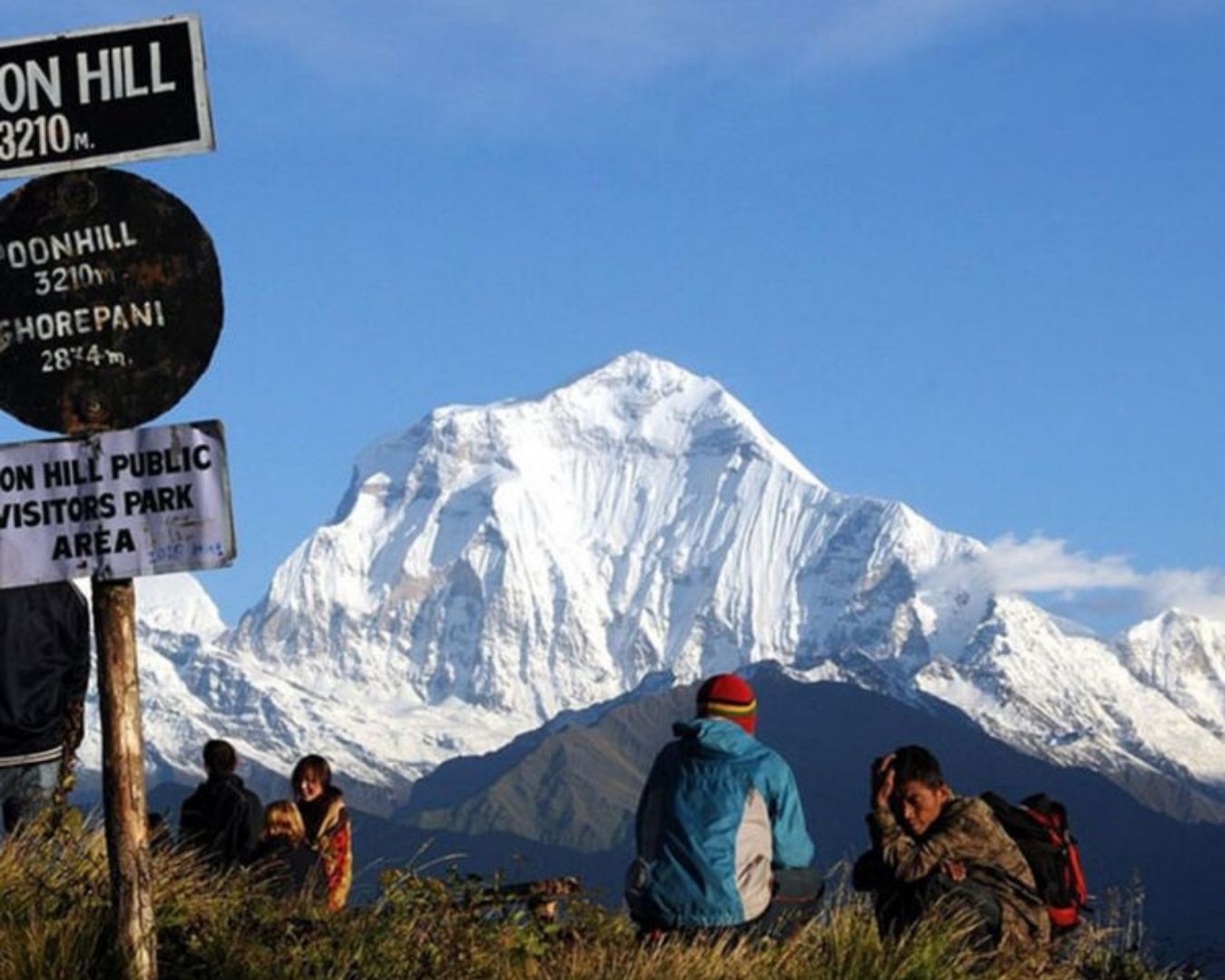
.jpg)
.jpg)
.jpg)
